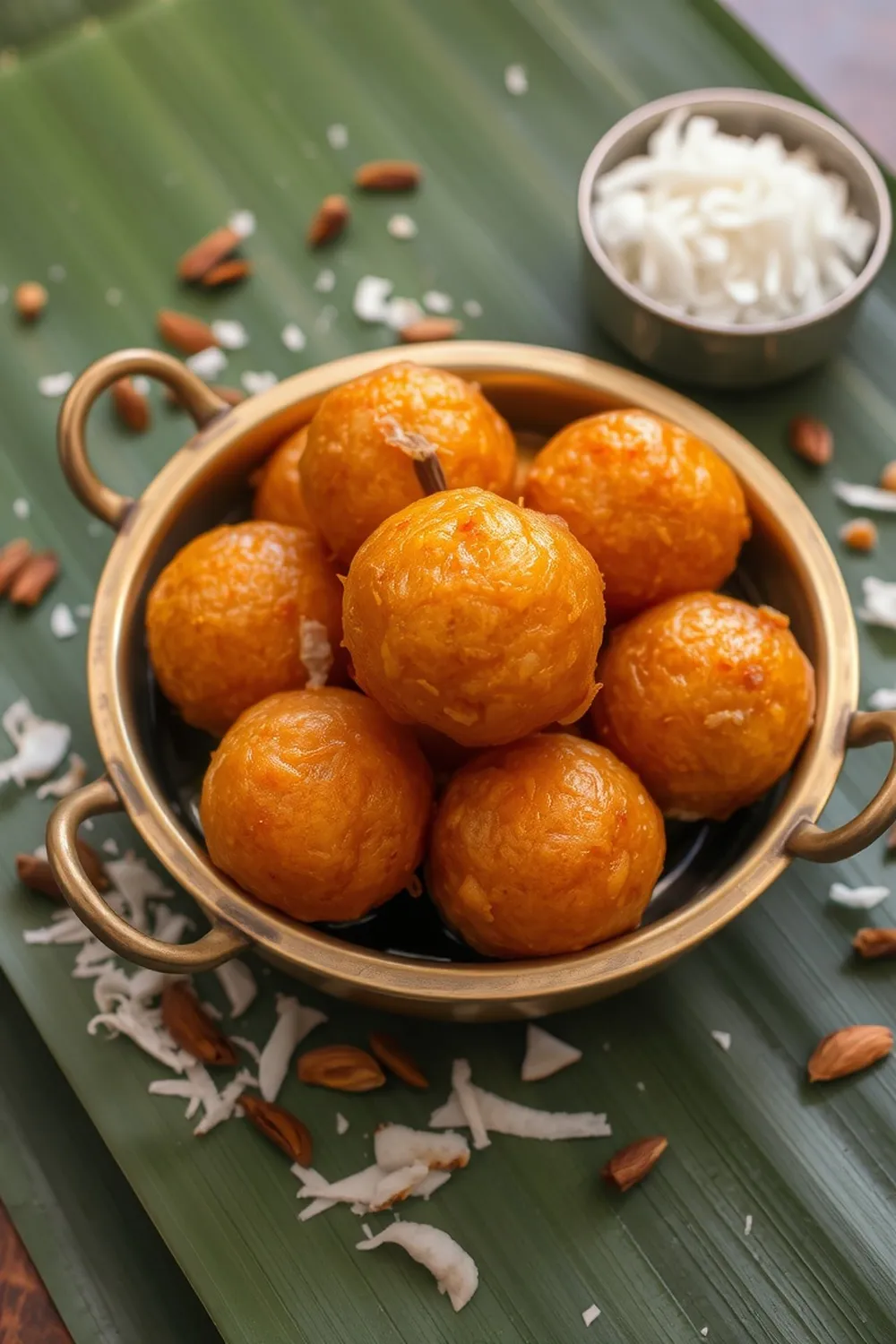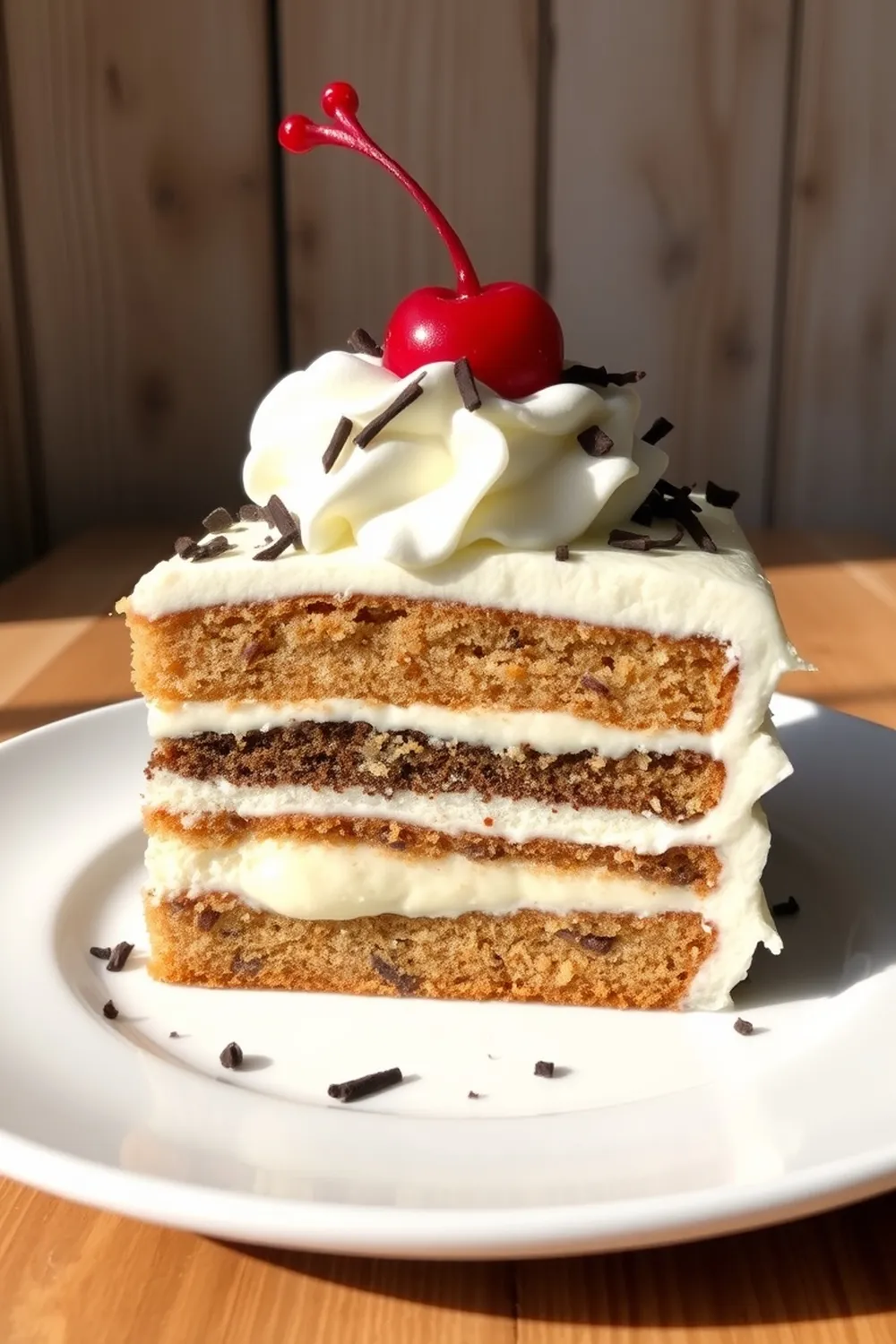- Heat ghee in a pan, add semolina, and roast over medium heat until golden brown, stirring constantly.
- Bring water to a boil with salt and carefully pour it into the roasted semolina, mixing well to avoid splattering.
- Cover and cook for 3-4 minutes, or until the water is fully absorbed.
- Add saffron soaked in warm milk and sugar. Stir until the sugar dissolves and the mixture loosens.
- Continue to cook, stirring constantly, until the ghee separates from the mixture and the halwa becomes non-sticky (2-3 minutes).
- In a separate pan, heat ghee and roast the nuts until golden brown. Mix the roasted nuts and cardamom powder into the halwa.
- Serve warm, garnished with extra nuts if desired.
- Calories:450 kcal25%
- Energy:1882 kJ22%
- Protein:8 g28%
- Carbohydrates:60 mg40%
- Sugar:30 mg8%
- Salt:150 g25%
- Fat:25 g20%
Last Updated on 4 months by Neha Deshmukh
Authentic Sooji Halwa Recipe – Saffron & Nut Indian Dessert
Introduction
Oh, Sooji Halwa. Just the smell of it cooking brings back so many childhood memories! This warm, comforting dessert was a staple in my home growing up, especially during winter festivals. It’s simple to make, incredibly satisfying, and honestly, a little bit of sunshine in a bowl. I’m so excited to share my family’s recipe with you – it’s a guaranteed crowd-pleaser!
Why You’ll Love This Recipe
This Sooji Halwa isn’t just delicious; it’s also surprisingly easy to whip up, even if you’re new to Indian cooking. It’s ready in under 30 minutes, perfect for a quick dessert or a festive treat. The beautiful aroma of saffron and cardamom, combined with the crunchy nuts, makes it a truly special experience. Plus, it’s naturally vegetarian!
Ingredients
Here’s what you’ll need to create this magic:
- 1 cup Semolina (Sooji/Rava) – about 150g
- 1 cup Sugar – about 200g
- 2 cups Water – 480ml
- ¾ cup Ghee (divided) – about 170ml (plus extra for roasting nuts)
- ½ cup Chopped nuts (Almonds, Cashews) – about 60g
- 1 pinch Salt
- 1 pinch Saffron (optional)
- 1 tablespoon Milk (warm) – 15ml
- 2 Cardamom (powdered)
Ingredient Notes
Let’s talk ingredients! A few little things can make a big difference.
Semolina (Sooji/Rava) Varieties
There are different types of semolina available. I prefer using medium-sized sooji for halwa – it gives the perfect texture. Fine sooji can sometimes make the halwa a little gluey, while coarse sooji might take longer to cook.
Ghee: The Importance of Quality & Quantity
Ghee is key to a good Sooji Halwa. Don’t skimp on the quality! It adds a richness and flavor that butter just can’t replicate. The amount of ghee might seem like a lot, but it’s what gives the halwa its signature texture and prevents it from becoming dry.
Saffron: Regional Variations & Substitutes
Saffron adds a beautiful color and delicate flavor. It’s optional, but highly recommended! In some regions of India, rose water is also added along with saffron. If you don’t have saffron, a tiny pinch of turmeric can give a similar golden hue, though the flavor will be different.
Nuts: Choosing & Preparing Your Nuts
Almonds and cashews are classic choices, but feel free to experiment! Pistachios or walnuts would also be lovely. Roasting the nuts brings out their flavor and adds a nice crunch. Don’t skip this step!
Step-By-Step Instructions
Alright, let’s get cooking!
- First, heat about 3 tablespoons of ghee in a heavy-bottomed pan over medium heat. Add the semolina and roast it, stirring constantly, until it turns a deep golden brown. This takes about 5-7 minutes. Be patient and don’t walk away – burnt sooji is no fun!
- While the semolina is roasting, bring the water to a boil with a pinch of salt.
- Now, carefully pour the boiling water into the roasted semolina, stirring quickly to prevent spluttering. Don’t worry if it bubbles up – that’s normal!
- Cover the pan and let it cook for 3-4 minutes, or until all the water is absorbed.
- In a small bowl, soak the saffron in the warm milk. This helps release its color and flavor.
- Add the sugar and saffron-infused milk to the halwa. Stir well until the sugar dissolves and the mixture loosens up.
- Now, the real work begins! Cook continuously, stirring constantly, for another 2-3 minutes, until the ghee starts to separate from the mixture and the halwa becomes non-sticky. This is when you’ll know it’s almost ready.
- While the halwa is cooking, heat another tablespoon of ghee in a separate pan. Roast the chopped nuts until golden brown and fragrant.
- Finally, stir in the roasted nuts and powdered cardamom into the halwa. Mix well.
- Serve warm, garnished with extra nuts if desired.
Expert Tips
- Constant Stirring is Key: Seriously, don’t stop stirring! This prevents the halwa from sticking to the bottom of the pan and ensures even cooking.
- Use a Heavy-Bottomed Pan: This helps distribute the heat evenly and prevents burning.
- Don’t Overcook: Overcooked halwa can become dry and grainy.
Variations
- Vegan Sooji Halwa: Substitute the ghee with coconut oil or vegan butter. Use plant-based milk for soaking the saffron.
- Gluten-Free Considerations: Semolina can sometimes contain traces of gluten. If you have a severe gluten allergy, double-check the packaging or use a certified gluten-free semolina.
- Adjusting the Sweetness Level: Feel free to adjust the amount of sugar to your liking. Start with ¾ cup and add more if needed.
- Festival Adaptations (e.g., Diwali, Lohri): My grandmother always added a sprinkle of edible silver leaf (varak) during Diwali for an extra festive touch!
Serving Suggestions
Sooji Halwa is best served warm. It’s delicious on its own, but you can also pair it with a scoop of vanilla ice cream or a dollop of yogurt for a cooling contrast.
Storage Instructions
Leftover Sooji Halwa can be stored in an airtight container in the refrigerator for up to 3 days. Reheat gently on the stovetop or in the microwave, adding a splash of milk or water if needed to restore its creamy texture.
FAQs
What type of semolina is best for halwa?
Medium-sized sooji is ideal. It provides the perfect texture without being too fine or too coarse.
How do I prevent the halwa from becoming sticky?
Roasting the semolina properly and stirring constantly while cooking are the keys to preventing stickiness. Make sure all the water is absorbed before adding the sugar.
Can I make Sooji Halwa ahead of time?
You can make it a day ahead, but the texture is best when served fresh. Reheating might slightly alter the consistency.
What can I substitute for saffron?
A tiny pinch of turmeric can provide color, but it won’t have the same flavor. Rose water is another option for adding a fragrant touch.
How can I adjust the ghee quantity for a healthier version?
While ghee is traditional, you can reduce the amount slightly. However, be aware that this might affect the texture. Using a good quality ghee is more important than using a large quantity.










